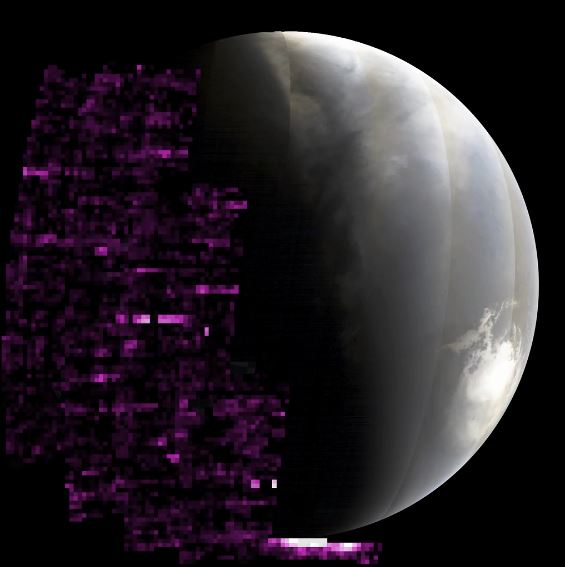In May, the sun unleashed a series of powerful radiation-laden outbursts, creating stunning northern and southern lights on Earth. However, Earth wasn’t the only planet affected. On May 20, Mars was hit by an intense solar storm.
Shannon Curry, principal investigator of NASA’s Mars Atmosphere and Volatile Evolution orbiter (MAVEN) at the University of Colorado, Boulder, noted that this was the strongest solar energetic particle event observed on Mars to date. When the storm hit, it generated an aurora that lit up Mars from pole to pole. If astronauts had been on the Martian surface, they would have seen a spectacular jade-green aurora, although no surface cameras captured the colors.
Despite the beauty, the storm highlighted Mars’s harsh conditions. Mars’s thin atmosphere and lack of a global magnetic shield meant that its surface, as measured by NASA’s Curiosity rover, was exposed to radiation equivalent to 30 chest X-rays. While not lethal, it would be quite harmful to humans. Dr. Curry emphasized the power of these solar storms and the risks they pose.
Lava tubes, which are extensive caves formed by volcanic activity, could offer protection for future Martian explorers during such solar events. However, with solar particles sometimes reaching Mars in minutes, astronauts would need to stay vigilant about space weather forecasts, as noted by James O’Donoghue, a planetary astronomer at the University of Reading in England.
The May 20 event was formidable from the outset. A strong solar flare first bathed Mars in X-rays and gamma rays, followed by a coronal mass ejection (CME) – a stream of charged particles from the sun. Mathew Owens, a space physicist at the University of Reading, noted the speed of these particles.
On Earth, particles from solar storms are captured by the magnetic field and directed to the poles, where they collide with atmospheric gases, creating colorful auroras. Mars, however, lost its magnetic field long ago when its iron core ceased churning. Thus, the solar particles hit Mars’s atmosphere unimpeded, as explained by Nick Schneider, lead scientist on the Imaging Ultraviolet Spectrograph on MAVEN at the University of Colorado, Boulder.
This led to auroras across Mars, with MAVEN documenting a strong ultraviolet glow. On the Martian surface, the aurora would have appeared light green due to the reaction of oxygen atoms in the atmosphere.
The storm also affected Mars’s robotic inhabitants. Charged particles disrupted Curiosity’s navigation cameras and caused static in the star tracker cameras on the Mars Odyssey and Mars Reconnaissance Orbiter satellites, resembling “snow.” Solar storms can degrade spacecraft solar panels, and May’s storm was no exception. Dr. Curry mentioned that the degradation from this storm was equivalent to what is typically seen over a year.
Despite the disruptions, the spacecraft weren’t severely damaged, and the scientific data collected was highly valuable. However, future storms may pose greater risks. Dr. Curry expressed that while the science team is excited by these events, the spacecraft operations team is less enthusiastic due to the potential damage.
The May solar storms served as a stark reminder of the challenges that Mars poses for future human explorers. Mars’s lack of a magnetic field and thin atmosphere make it vulnerable to solar radiation, necessitating precautions such as seeking shelter in lava tubes during solar events. Keeping up-to-date with space weather forecasts will be crucial for the safety of Martian astronauts.
As space exploration continues, understanding and mitigating the effects of solar storms will be vital for ensuring the safety and success of missions to Mars and beyond. The events of May highlight the dynamic and sometimes dangerous nature of our solar system, underscoring the importance of continued research and preparation.

